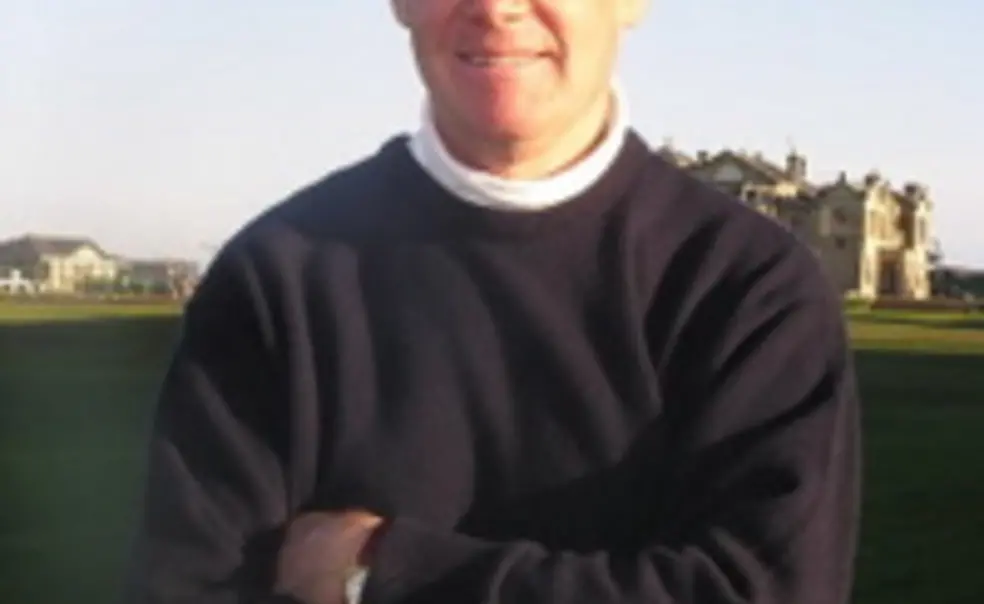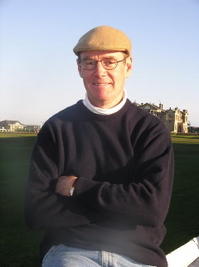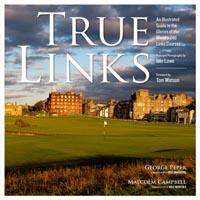Peper '72 spotlights "true links" golf
Golf enthusiasts probably know the term “links golf.” It refers to a distinct breed of golf course — and for some golfers the most prized. George Peper ’72, a former editor-in-chief of Golf magazine, and his coauthor, Malcolm Campbell, a former editor of Britain’s Golf Monthly magazine, have come up with a list of “true links” courses – most in the United Kingdom where nature created them long ago — in their new book, True Links: An Illustrated Guide to the Glories of the World’s 246 Links Courses (Artisan). Of those, just four are in the United States: three in Oregon and one on Cape Cod. Peper spoke with PAW’s Katherine Federici Greenwood.
For those of us who aren’t golfers, what is a links golf course?
There’s a popular misconception among nongolfers that links refers to any golf course. That it’s synonymous with “golf course.” There are 30,000 golf courses in the world and fewer than 300 links. So it’s a very, very small percentage — less than one percent. Essentially they occur along the sea. That’s an essential component, to have what we call a maritime environment —the grounds lie within a mile or two of the sea. It’s generally barren, treeless land, and, most importantly, it’s sand-based.
They were created back in the Ice Age through various geological happenstances. They produced this land that was basically useless – it was between the beach and the arable land. It was used for grazing sheep, but it turned out to be a pretty good place to bounce your golf ball. That’s what produces the unique conditions of links golf, by that I mean a fast-running game, as opposed to the American game and the game throughout most of the rest of the world … where you loft the ball in the air and it comes down on the green. Links golf is played pretty much along the ground.
What are nonlinks courses called?
There are parkland golf courses – that’s most of what American golf courses are. They play through trees and around lakes and ponds. In the U.K. they have moorland courses and heathland courses. In Arizona we have desert courses. There are about a half dozen varieties, but the rarest and first of them all was links.
What are challenges and rewards of playing on a true links course?
You don’t have to worry about hitting [the ball] over ponds and trees. What you do have to deal with is the invisible peril which is the wind – which is constant or near constant — anywhere between 15 to 50 miles per hour plus. The ground is kind of rumpled. It’s like a big piece of quilted foil … so you really have a flat fairway, which means you may have an uneven lie. The ball may be up above or below your feet. And going into the green, normally you’re bouncing the ball and you have to read the topography. … So it forces you to think. Links golf is never straightforward. But when you pull off the shot successfully, it gives you a satisfaction that is more than just a well-played shot can bring. You feel like you’ve had a little mind-over-muscle and beaten the golf course.
Are links your favorite courses?
Yeah. If I never played anything but links golf for the rest of my life, I wouldn’t be unhappy. We live half the time in Rhode Island and half the time in the U.K., where I’m fortunate to be able to play on the Old Course at St. Andrews [in Scotland]. That’s been around for 600 plus years. It wasn’t really designed. It grew out of the land. Nobody knows exactly how it came to be.
You argue in the book that new golf courses designed should be made in the links model – because they are more economical to build and maintain and less harmful to the environment.
To the extent that land will permit and agronomy will permit. There’s a movement afoot in golf architecture right now … of minimalism, where the notion is to disturb the ground that you are given as little as possible. There was a time when thousands of truckloads of dirt, millions of cubic yards of dirt, were moved to create golf holes. That is out of vogue now. Now [the trend is to] leave the ground alone and let the golf course grow out of the ground rather than being stamped upon it. And that obviously is less expensive to produce. Links golf is also less expensive to maintain, especially in the U.K., where they need almost nothing in the way of chemicals and pesticides and little water since there’s a lot of rain over there. And you don’t want the fairways to be wet because that promotes this soggy, thud of the ball rather than the fast-running conditions. … The minimalism movement, the weak economy, and the green movement have all combined to make links golf in vogue at the moment.
Interview has been condensed.















No responses yet